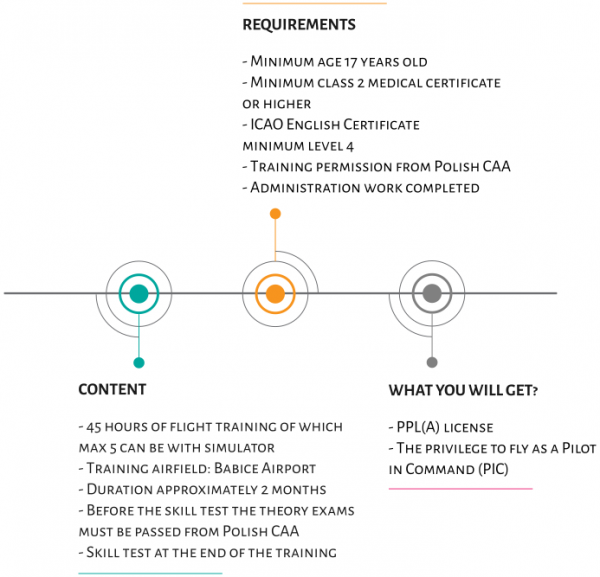
PPL(A)-PRIVATE PILOT LICENCE (Practical training)

PRACTICAL TRAINING
PPL(A)_PRIVATE PILOT LICENSE

PPL(A) is the first step in a typical flight training. It builts the basic intuitions, knowledge and skills toward being a pilot. During PPL training the students will learn how to feel the aircraft and the surrounding factors. They will learn how to land an aircraft solo along with how to plan and navigate cross country flights. After succesful course completion students will be able to control an aircraft by themselves.
PPL(A) is considered to be the first step towards different objectives such as being a recreational pilot or commanding huge commercial jets for an airline company.
The minimum flight hours required for PPL(A) training is 45 hours with a qualified flight instructor. The practical training is followed according to a training syllabus designed to increase the skills of the trainee to a satisfactory level. During the practical training the experienced flight instructors will check the improvements of the trainees and suggest remedies for problematic areas.
Holder of a PPL(A) – Private Pilot License – is authorized to carry out flights without remuneration as the pilot-in-command or as a co-pilot of aircraft or touring motogliders in non-commercial operations.
Each person applying for a private pilot’s license must meet the following conditions:
- being not less than 16 years old at commencement of the theoretical course,
- being not less than 17 years old on the date of issue of the license
- pass the official theory exams covering 9 subjects
- obtain a medical certificate Class II or higher (i.e. Class I), issued by an approved aviation medical examiner.
- ICAO English Level 4 or more
- be a person without criminal records
This qualification allows to act as Pilot in Command (PIC) on single-engine, piston-powered aircrafts-SEP(L)- with a maximum take-off weight of 5700 kilograms, during the official day time, under Visual Meteorological Conditions (VMC)









